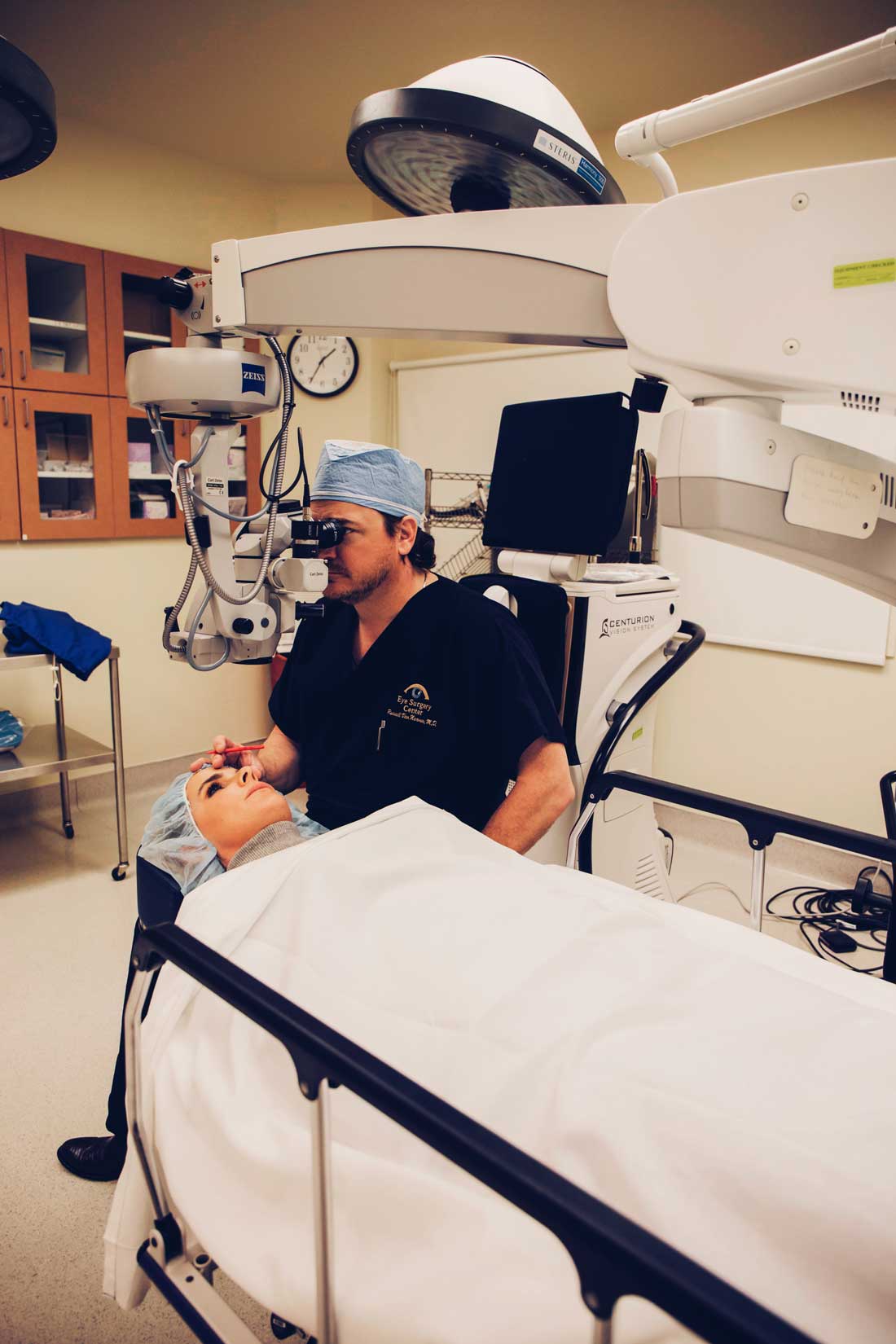Premium Intraocular Lenses
Intraocular lenses (IOL) are small artificial lenses for the eye, typically replacing damaged lenses that have been removed during cataract surgery.
Maintaining the best eye care health is Dr. Van Norman’s number one priority with all of his patients.

There are several different types of intraocular lenses available to patients in Shreveport depending on the individual’s needs:
- Monofocal intraocular lenses are tuned to only focus on a short, medium, or long range distance.
- Multifocal intraocular lenses are tuned to focus on both short and long range distances, using different regions of the lens that must be focused on by the patient.
- Toric introcular lenses which are FDA approved to treat astigmatism.
There are also different specialized types of intraocular lenses for patients who have other vision problems that can be corrected while operating on cataracts:
What is known as a “toric lens” that can be specially developed by an ophthalmologist to correct refractive errors from astigmatism.
Aspheric intraocular lenses are advanced technology lenses which allow the eye to distinguish shades of light and dark and see better at night.
HOW CATARACT SURGERY WITH AN INTRAOCULAR LENS IS PERFORMED:
In most cases, the doctor should be able perform intraocular lens surgery at a local Shreveport facility in less than an hour, though the benefits will last a lifetime. Before the surgery, patients will receive local anesthesia with IV sedation. Once they are comfortable, the ophthalmologist will remove the eye’s natural lens. The methods for removing the damaged lens vary:
This technique is the most common method of lens removal. The surgeon will create two small incisions between the cornea and the white of the eye. A tiny probe will go inside these incisions, emitting ultrasound waves until the lens breaks apart without damage to the surrounding tissues. The doctor can then gently suction out the damaged lens before placing the new intraocular lens behind the iris.
Your doctor will make a small incision between the cornea and the white of the eye, removing the damaged lens and replacing it with an intraocular lens.
During laser-assisted surgery, the doctor will make incisions using highly precise lasers, further reducing the already low risks of cataract surgery.
AFTER EFFECTS & RESULTS
The recovery time for intraocular lens surgery is relatively short. In most circumstances, patients should be able to resume some normal activities within a day of surgery; however, we recommend no strenuous activity for approximately a week.
